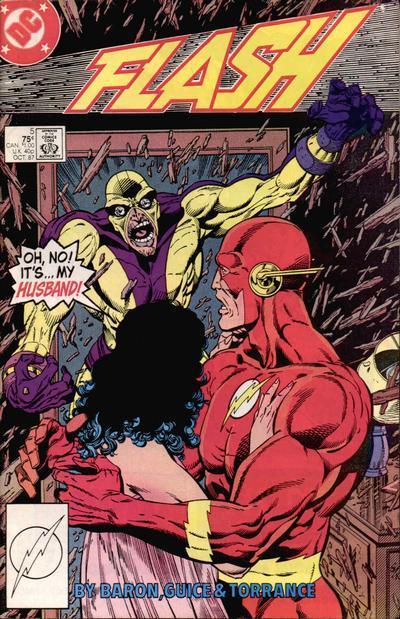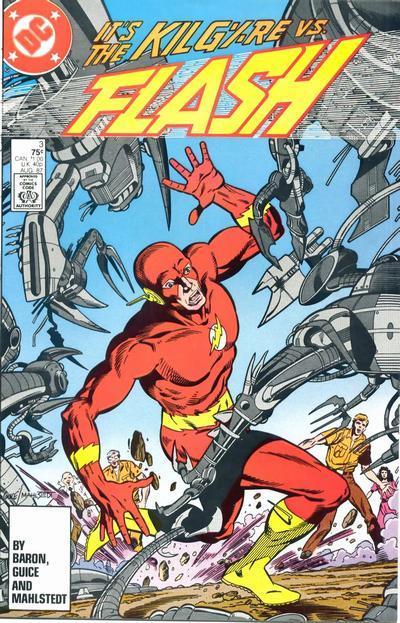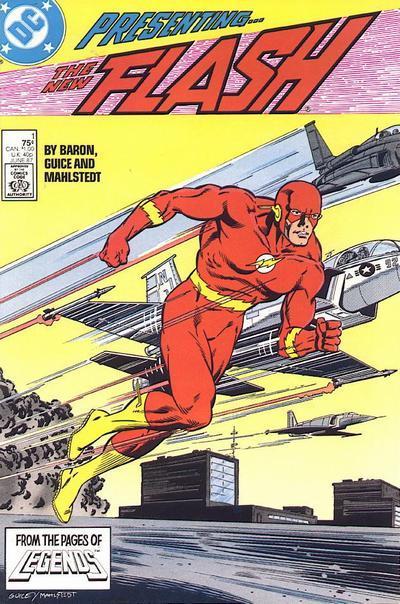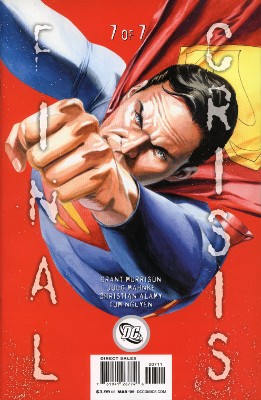
Flash #5, October 1987
Story overview:
The issue starts out in Syracuse, New York and Tina McGee is telling Jerry, her husband, that they are getting a divorce. Jerry doesn’t like this and takes it out on Tina. Jerry abuses Tina and runs off to Volton Labs, division 8, where he works. He injects himself with a steroid which we learn is making him angry and abusive. It’s his 29th injection of steroid B-Q19 and he says that he is “now ready to proceed with stage three of Project Ubermensch. The story now cuts to Long Island where Flash is putting together a TV set with full surround sound stereo. He gets a call from Tina and she tells him what has happened between her and Jerry. Note that both her and Flash don’t know about Project Ubermensch. Flash runs to Tina and on his way explains how he met her and all that jazz from issues #3 and #4. He gets to her at a fine dining spot called the Blue Swan where Flash has 2 meals. Tina explains to Flash that Jerry has been taking steroids (she doesn’t know what they do) and that they make Jerry paranoid, dangerous, and crazy. She says that Jerry can find her in the city and she wants to leave, but is afraid he’ll follow them out. Wally runs her to his place and shows her around. While this is happening, Jerry puts on a suit and we learn that the steroid gave him super speed and he is pretty damn strong. He acts completely paranoid and starts his hunt for Tina and Wally. Note that Wally’s secret identity isn’t so secret. Cut back to Long Island where Wally’s father is at the door. He explains to Wally that he and Wally’s mother were experiencing some difficulties and they used up the $500,000 that Wally gave them when he won the lotto. Tina shows Wally an editorial in the newspaper that cancels his town’s liability service since he moved in. Tina and Wally go to a very nice place to eat (he has two filet mignons and a lobster), Wally’s Pops stay in Wally’s house sleeping. In the restaurant Wally spots the president of the city council who wrote the editorial in the newspaper. They have quite the heated discussion about the editorial and all. Once home, Wally and Tina go to sleep in their respective rooms. Tina comes into Wally’s room saying that she only feels safe in his arms and some more lovey dovey jibber-jabber. They hear a few CRASH-BOOM-THUMPS and the house’s alarm system rings. A fist comes through the wall of the room Wally and Tina are in and it turns out to be crazy Jerry McGee—all steroided up; fast and strong. Flash lays a few punches on him when Jerry runs off with Tina. Angry, crazy, and blind Jerry with Tina in his arms makes a ‘SPLANG-WHUMP’ into none other than a Texaco Fuel Depot. And BOOM!
Review:
It amazes me how much story they fit in comics back then. At quite a few points in the story, I could see the issue ending right then and there, and it didn’t! I’m guessing this is because I’m used to today’s shorter storied comics. This issue really stresses Jerry’s psycho – craziness. It has him beating up complete strangers for looking at him in his ridiculous yellow and purple suit. I mean if you saw a random person in an outlandish yellow/ purple suit, who wouldn’t look? Jerry’s paranoia is almost to the point of no return. Things I noticed throughout the issue:
•No offense to Jackson Guice, but the anatomy in this issue is really well, an issue (I know, I had to).
•Flash’s symbol is a lot higher up on his chest throughout the issue, even noticeably on the cover.
•No offense to any colourists from 1987, but to me it looks like colourists had a heck of a easier job than they do today.
•Lots of BAM-POW-THUD-CRASH-WHACK-POP’s in this issue.
•This is more of a general Flash Vol. 2 so far thing I noticed—there’s a lot of jumping out of/being thrown out windows.
Overall, I really like how this story is going and it’s definitely believable.
Rating:
Writing: Five out of five stars. Believable, and fun.
Art: Four out of five stars. Anatomy really annoyed me at some parts.
Favorite Quote:
“But, dad! I thought that money would help you and mom!” “Well I suppose it did for a while…. But now that it’s gone…” “But DAD! That was $500,000!” –Wally West, Rudolph West, page 15.
As usual, more after the break!




